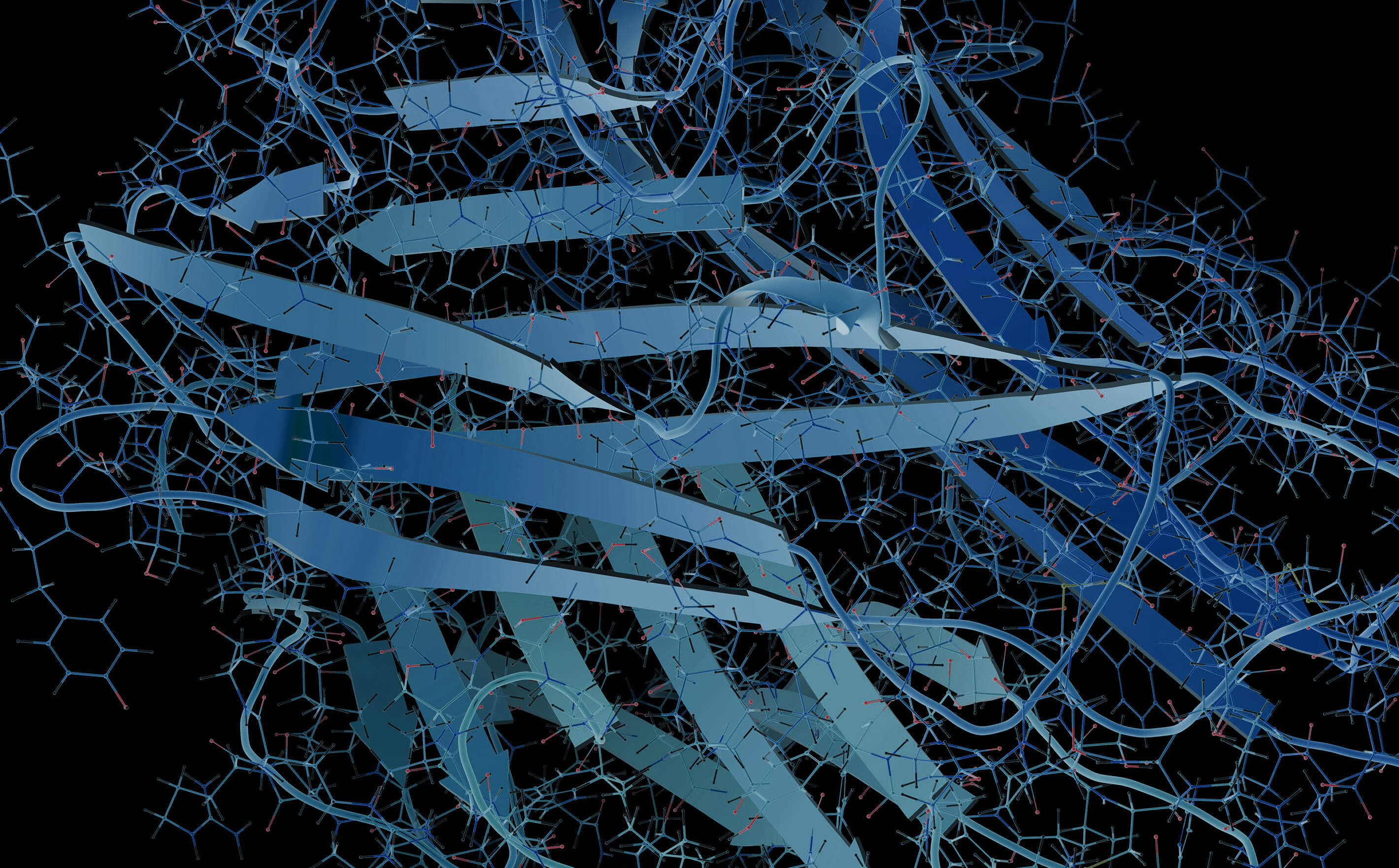
Technology to drive breakthrough science
The Proteomics Core and Mass Spectrometry Center innovates, develops, and implements advanced protein analytical technologies (including quantitative proteomics, post-translational modifications, protein dynamics, and biomarker discovery) to advance basic biology and biomedical research. Staff in the Proteomics Core and Mass Spectrometry Center engage in many collaborative projects and are involved in worldwide mass spectrometric studies, as well as software facility. Many different workflows are supported at our facility or can be developed together to support biological projects with innovate technologies to gain insights into molecular details in a system-wide approach.
-
 Birgit Schilling, PhD . Director
Birgit Schilling, PhD . DirectorBirgit Schilling, PhD, is the director of the Proteomics Core and a Professor at the Buck Institute. She received her diploma and PhD in chemistry from the University of Hamburg and Clausthal University of Technology in Germany and did a postdoctoral fellowship with professors Al Burlingame and Brad Gibson at the University of California, San Francisco. Dr. Schilling joined the Buck Institute Proteomics Core in 2000 and has more than 25 years of experience in mass spectrometric (MS) technologies. She specializes in quantitative proteomics in the context of aging as well as MS method and workflow developments, such as for post-translational modifications, protein secretomes, exosomes, biomarkers, protein turnover, and proteostasis. She is a leader in the field of applying novel MS scan types, such as data-independent acquisitions (DIA) and parallel reaction monitoring (PRM), and corresponding data processing. Dr. Schilling oversees all proteomics projects and coordinates all collaborations.
-
 Christina King, PhD . Associate Director
Christina King, PhD . Associate DirectorHailing from Houston, TX, Christina joined the Mass Spectrometry Core and Schilling Lab in December 2020. She graduated from the University of Houston in May 2012 with a Bachelor's degree in Chemistry and a minor in Biology. Under the direction of Dr. Renã Robinson (RASR), she learned proteomics techniques to study aging, infection, and Alzheimer's disease, thus earning a Ph.D. in Analytical Chemistry from the University of Pittsburgh in December 2018. Continuing in the RASR Lab as a Vanderbilt Interdisciplinary Training Program in Alzheimer's Disease post-doctoral fellow, she helped develop a robust automated plasma proteomics protocol to study racial disparities in hypertension. As a member of the Core and Schilling Lab, Christina plans to apply her experience with proteomics-based studies and high resolution accurate mass (HRAM) mass spectrometry to assist with ongoing and future projects. In her spare time, she likes to bake cookies and challah, listen to podcasts, kayak, volunteer, and travel.
CKing@buckinstitute.org
-
 Samah Shah . Research Associate
Samah Shah . Research AssociateSamah Shah graduated from the University of British Columbia with a BS in Microbiology. While there, she contributed to research on a bifunctional enzyme of F. nucleatum, and worked as a teaching assistant for a second year genetics module. She is interested in the medical and therapeutic applications of microbiology and immunology.
SShah@buckinstitute.org
Protein expression changes
- Precise quantification
- High throughput of MS quantifying ~5000 proteins per acquisition
- Technology development
- State-of-the-art label-free workflows (data-independent acquisitions)
Protein networks
- Protein-protein interactions
- Immunoprecipitations
Biomarkers of aging and disease
- Processing of biofluids, plasma, exosomes, synovial fluid
- Protein secretion into biofluids from diseased tissues
- Clinical sample sets
Protein turnover
- Changes in protein synthesis and degradation
- In-depth analysis of protein half-life and protein flux
Post-translational modifications
- Dynamic regulation of PTM: phosphorylation, acetylation, succinylation, malonylation, ubiquitination, AGES, etc.
- Affinity enrichments
- Optimized for low sample material (from tissues)
- PTM site stoichiometry
Software development
- Custom software for data processing and reports
- Skyline (MacCoss, U.Washington)
Many different types of analysis and projects can be processed in the Proteomics Core. Mass spectrometric workflows include data-dependent acquisitions (DDA) for protein discovery and identification; data-independent acquisitions (DIA) for comprehensive sampling of the proteome and accurate relative quantification; and targeted, hypothesis-driven proteomics experiments applying selected reaction monitoring (SRM) and high-resolution parallel reaction monitoring (PRM). Typical mass spectrometric experiments are listed below:
- Protein identification
- Quantitative proteomics assessing differential protein expression and relative changes of proteins when comparing different experimental conditions
- Analysis of post-translational modifications (PTM), such as phosphorylation, acylation, ubiquitination, etc., including PTM crosstalk
- Affinity enrichments
- Protein-protein interaction networks
- Protein turnover, protein half-life, proteostasis
- Protein aggregation
- MS of biofluids (e.g., plasma, urine) for biomarker analysis of aging and disease
- Protein secretomes, exosomes, surfaceomes
Mass spectrometric instrumentation
The instrumentation at the Buck Institute Proteomics Core features mass spectrometers with overall high sensitivity and very high scan speed, as well as a large dynamic range that allows us to collaborate on a wide range of biological projects and questions that investigators may have. Different instruments offer different scan types, and our lab has specialized in data-independent acquisition (DIA or SWATH), which enables high-throughput mass spectrometry with measurement and quantification of up to 5,000 proteins in a single acquisition.
TripleTOF 6600 quadrupole time-of-flight (QqTOF, SCIEX) with 2D-nano LC system (Eksigent)
The TripleTOF 6600 is an orthogonal quadrupole time-of-flight mass spectrometer with high-resolution accurate mass technology. Optimized instrument control electronics in conjunction with patented LINAC collision cell technology deliver ultra-fast acquisition rates and high-resolution scanning. The TripleTOF 6600 is either operated in data-dependent acquisition (DDA) for discovery mass spectrometry or, more often, in data-independent acquisition (DIA/SWATH) for highly accurate protein quantification and determination of relative changes between different sample conditions. High-resolution parallel reaction monitoring (PRM) is used for sensitive and specific targeted quantification. Protein identification, PTM analysis, protein-protein interaction experiments, and so forth are routine on the TripleTOF 6600. Using DIA workflows, proteome-wide comprehensive protein quantifications can be performed in a high-throughput and accurate fashion.
TripleTOF 5600 quadrupole time-of-flight (QqTOF, SCIEX) with 2D-nano LC system (Eksigent)
The TripleTOF 5600 is an orthogonal quadrupole time-of-flight mass spectrometer with similar capabilities as the TripleTOF 6600. Together, they are a powerful suite of instruments for proteomics characterization of samples sets derived from tissues, cell lines, stem cells, and biofluids for analyzing different model organisms or human samples.
QTRAP 5500 triple quadrupole linear ion trap (QQQ, SCIEX) with 2D-nano LC system (Eksigent)
The QTRAP 5500 is a triple quadrupole linear ion trap for targeted proteomics analysis. The QTRAP 5500 allows for highly multiplexed selected reaction monitoring scan types (SRM), which provides highly sensitive and reproducible SRM-MS assays with a very good robustness when acquiring data from complex matrices (e.g., plasma). The QTRAP 5500’s high sensitivity quantification at high-throughput is key for several current projects.
vMALDI-LTQ (Thermo)
An intermediate-pressure matrix-assisted laser desorption/ionization (vMALDI) source is coupled with a LTQ linear ion trap. This instrument offers options such as multiple-stage mass spectrometry (MSn), which is highly relevant for structural elucidation of oligosaccharide and complex lipid structures.
Buck Institute Quantitative Proteomics Courses:
Please note: The April 2020 class has been cancelled and postponed until further notice. Updated information will be posted here when available.
The Buck Institute for Research on Aging and the Skyline Team are pleased to co-announce the 5th Buck Institute Targeted Proteomics Course on April 13-17, 2020 in the Northern San Francisco Bay Area, California (Novato).
The course schedule will address emerging quantitative proteomics strategies. This will include the use of Skyline in the context of different quantitative targeted workflows, assay development, generation of acquisition methods, processing of quantitative data sets, as well as using statistical and R software packages and tools in Skyline. Data examples will cover high through-put SRM, MS1 Filtering, parallel reaction monitoring (PRM) and data-independent acquisition (DIA/SWATH). Data examples will range from analysis of posttranslational modifications, work with human plasma for biomarker analysis and projects involving protein-protein interactions. In addition, small molecule Skyline features and applications will be presented.
The instructor list includes researchers and software developers with a wealth of combined experience in targeted and quantitative proteomics, and both using and creating Skyline to meet the needs of this research approach.
Current Course Date:
TBA
Past Course Dates:
April 13-17, 2020
March 18-22, 2019
April 2–6, 2018
February 27–March 3, 2017
Please contact as us for more detailed information on the core’s mass spectrometric capabilities, services, and rates.
Birgit Schilling, PhD
Professor
Director
415-209-2079
Samah Shah
Research Associate
415-209-2000 x6710
CORE TECHNOLOGIES
Technological innovation in the service of scientific advancement
Our cutting-edge technologies support the Institute’s goals and put the newest capabilities in the
hands of our scientists.